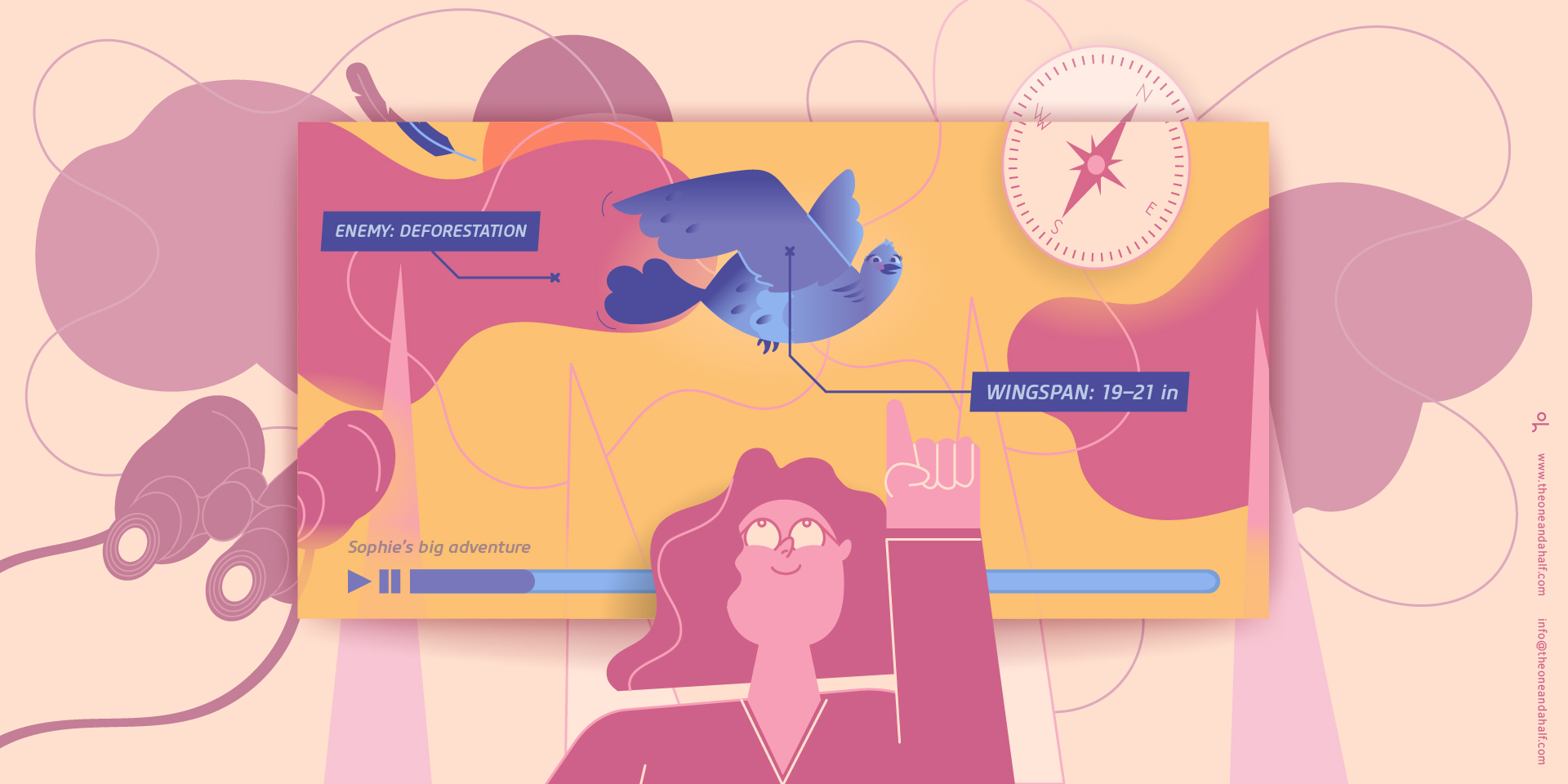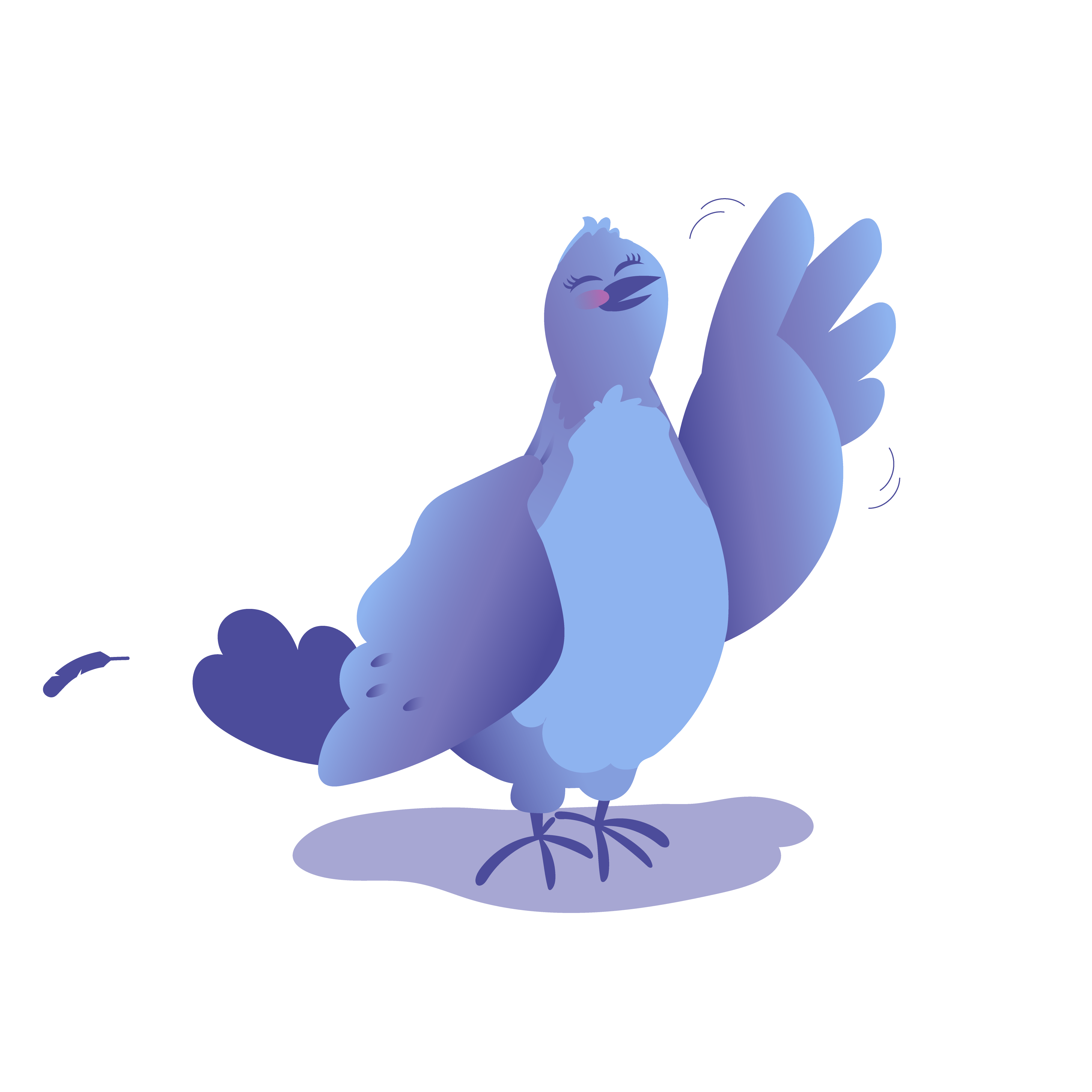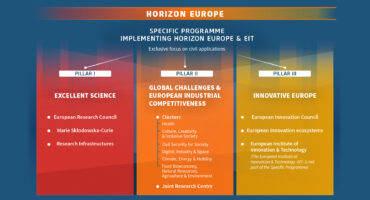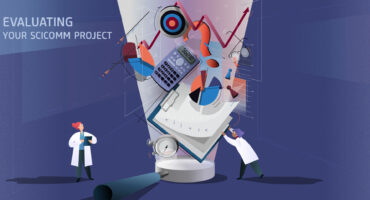Animating Science Communication
How research animation videos reach and engage your audience
written by Antónia Ribeiro for one and a half


We make animations, motion graphics and illustrations for your audio-visual communication needs.
Phone: +357 99 658134
Email: info@theoneandahalf.com
One And a Half
28 General Timayia Avenue Kyriakos Building - Block A - Office 301 Larnaca, Larnaca, 6046

In a world drowning in information, the first commandment of communication is to stand out. Science Outreach is much more than going on about our hard-won facts to an audience. We need effective communication to demand attention to our topic, to get our message across and to create empathy that nurtures change. Animation may just be the way to do it.
Why use animation:
Once you finish reading this page, around 300 hours of videos have been uploaded to Youtube. By the end of the day, 4 billion videos have been watched on Facebook. It is impressive- almost scary- the amount of information that exists on the Internet. A whole universe waiting to be explored, created between the cracks of a motherboard. Unfortunately, we don’t have a map and our only guide is a semi-perfect algorithm that makes us gauge at a bunch of ads before directing us to our destination.
Standing out in this avalanche of data requires effort and ingeniousness, especially in less sought out topics as Research Outreach. However, as researchers, we need to put our findings out there. It doesn’t matter if we are aiming for dissemination, communication or exploitation: the successful outreach of our hard work depends on captivating the audience and adapting the message, so that everyone may understand it.
With a push from the European Union towards responsible and participatory research, public communication should be on the forefront of our minds when writing a project proposal or applying for a grant. Modern research calls not only for effective communication of our findings to the public and the scientific field, but also for the inclusion of the community in every step of the way. Participatory research paves the path towards an informed and empowered society working closely together with scientists to answer our practical needs.
Let’s not forget, however, a practical angle to Research Outreach: involving the public builds trust, which in turn gathers funds and propels careers.
So, we know outreach is important. We know why we need to do it, when we should do it and the many formats we can use to pass our message. Truthly, there are a million different ways to communicate science, not all adequate for a particular context. Choosing the right methods is as important as the communication itself. Opt for a less efficient pathway, and you may lose your audience entirely.
Caveats aside, if you are looking for a fool proof, versatile medium, videos may be the way to go. Video is one of the most easily consumable communication vectors - everyday, Facebook has 4 billion video views from approximately 4.66 billion people with access to the Internet around the world.
Coincidently, in the past years, short explainer videos have risen in popularity throughout the scientific community. According to Springer Nature, video abstracts for non-expert audiences increases the authoring researcher’s visibility by a staggering 106%. If you are publishing an open access article and want to make your knowledge more accessible, there are various online platforms and databases for video abstract submissions.
However, just because something is shown as a video, it doesn’t mean it is captivating or the most efficient piece of science communication ever created. Video production abides by a various specific set of rules and doesn’t allow the same whimsical creativity that one can reach through animation.
When compared, animations can gather 20% more click rates than live action videos. Viewers seem to engage more with appealing and dynamic graphics than life-like portraits.
Slowly, yet steadily, the animation market has been growing through the past years. The trend hints to an increased appreciation of this highly versatile medium by the public (we all love a good Disney movie, after all). Animation is not just a great way to captivate children, it also enthrals the mind of grown ups - even the ones we find at scientific conferences.
Animation applies different techniques to convey a message. The colourful language, the organization of the script, the storytelling and even the voice chosen paint a complex scenario. In true holistic fashion, the final result is more than just the sum of its individual parts. This rich experience grounds the acquired knowledge and helps assimilation, remembrance and critical thinking.
As in Renaissance paintings, there are principles to be followed when animating. It’s through the mastery of these pillars - like anticipation and exaggeration of movements or staging of the action - that a short video manages to enrapture us viewers.
Design approaches - such as balance in the distribution of the visual elements, emphasis in one area or balanced proportion between all components - are also essential. Smart placement and representation of visual elements are core to turn a complex message into a pleasing composition.
The compelling script - armed with storytelling techniques and branding metaphors- drives the final message home while triggering an emotional response. The art style and the adaptable script makes this medium suitable for all ages, from young children venturing science for the first time to the older wonderers.
The visual schemes and representations help to clarify intangible, abstract or otherwise invisible phenomena. Difficult concepts such as Dark Matter or Cellular Life can thus be quickly explained.
An extra boost for animation marketing is its accessibility. With modern smartphones, watches and ipads, animations can be seen everywhere - but remember to keep it short. Even though you can, theoretically, make an animation as long as you want, short formats work best. We have a shorter attention span than a goldfish (probably due to the rise of the constant stimulation of the mobile Internet).
Ask most people involved in SciComm, and almost every single one will tell you that the most efficient way to engage an audience is through storytelling. Constructing a narrative allows us to transpose the message to our own hard reality. The created empathy persuades us into believing and caring about the information being communicated. Human beings answer to emotion, even when we need hard facts. Like a wrapped gift: we want what is inside but the packaging makes it so much better.
There are many approaches to storytelling. The simple Conflict and Resolution, the ubiquitous Story Circle (an adaptation of Joseph Campbell’s “The Hero’s Journey” usually applied in movies and series) and a personal favourite: And, But, Therefore, where you set the story, but introduce a conflict. Therefore you resolve it and conclude the story.
Storytelling in animation is very effective but you can introduce this technique in almost every form of written and visual communication. There are terrific tips on how to use storytelling in funding proposals, posters and even papers.
Huffpost quote: “Experts also appreciate a narrative that exposes the background and rationale of the work, as well as its broad relevance and implications.”
Braving the method can be intimidating and the concept of telling stories in science may sound ludicrous for the unaccustomed ear, but it’s certainly worth exploring!
Animated videos are also a prime opportunity to use personification. As with storytelling, giving faces to mitochondrias or making a rock speak facilitates a connection with the viewer, and pushes the audience’s engagement.
These compelling approaches not only enrapture the audience, they activate our brain to assimilate new information. Surprisingly, animation incites the viewer to ask more questions and think further from the information provided.
Jay Hosler, a science communicator and cartoonist, found the value of visual representation through his comics. Hosler has drawn innumerous biology-themed comics for children and is fascinated with the results and feedback from the kids: "I was blown away by how much science they had absorbed and internalized. But even more important was the fact they were asking me higher order questions, questions that extended beyond what was inside [the comics]”. As in comics, animation can not only inform but push the limits of our imagination and makes us question “What next?”.

An example - Imagine you are studying the mediterranean migratory patterns of the European turtle dove. You decide to do an animation about the threats the species faces and cast Sophie, a young turtle dove excited about her first migration, as the main character. Sophie is nervous about leaving her home for the first time and spending a few months on her Summer house. So we follow Sophie through her misadventurous on the migratory process until she reaches her new home. We may even see some character development, teaching children not to fear change. And in the midst of your coming of age story, you manage to tell the audience the wingspan of the turtle dove, the number of kilometers it flies during migration, the forests that serve as the species stop stations and how habitat loss threatens the journey.
From here, in the never ending landscape we call our minds, the audience will start to wonder about deforestation, tree monoculture and the hunting practices that threatened Sophie’s journey. They will ask questions, and without realising the audience will want to know more about the issues you study. All because it empathised with a turtle dove called Sophie.
By making the most of a naturally adaptable and captivating medium, we can muster our findings and explain them to any audience, being it for future research purposes or just to educate the curious at heart.
There are no limits when it comes to utilising animation in your research outreach. Want to make your paper memorable? Consider an animated abstract to contextualize your project. Do you have a conference and want to stand out from the rest of the never ending presentations? Why not an animated infographic with the main points of your project? Is the public struggling to empathise with your message? Try an animated video that uses storytelling to make science more approachable.
The most important message is to help your research rise over the 300 hours of video that have just been made available to the world.
At one and a half, we are passionate about research communications and getting your findings seen.
If you are curious about how your research project can benefit from animation, contact us today for a free consultation at info@theoneandahalf.com OR here.
Illustrations and infographics by Christina Kalli.
Written by Antónia Ribeiro
Antónia was a Biologist, once upon a time. She transitioned from the glamorous world of lab benches and international conferences to her one true love - Science Communication.
Portuguese by birth, Antónia is based in Malta. Besides being a freelance science writer, she works as a Social Media Manager for a research magazine and manages an Erasmus+ project for strategic partnerships.
Antónia has a Bachelor in Biology and a Master’s in Biomedical Research from the University of Coimbra, in Portugal. In her free time, she pets street cats and educates people on Portuguese gastronomy - often against their will.
You can find her on Linkedin.


